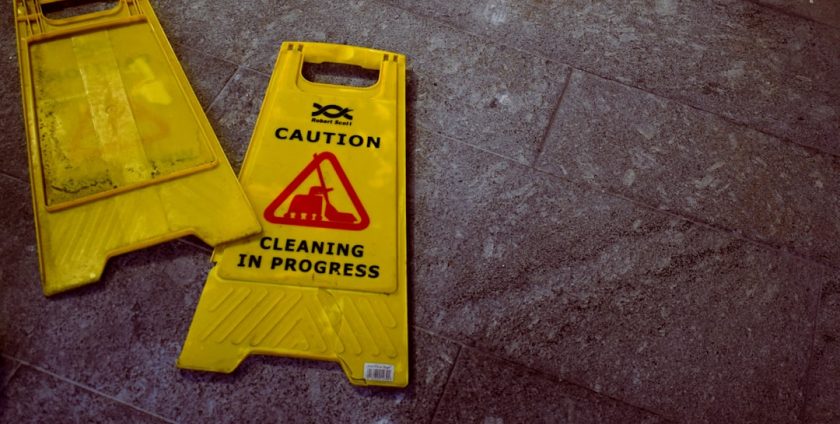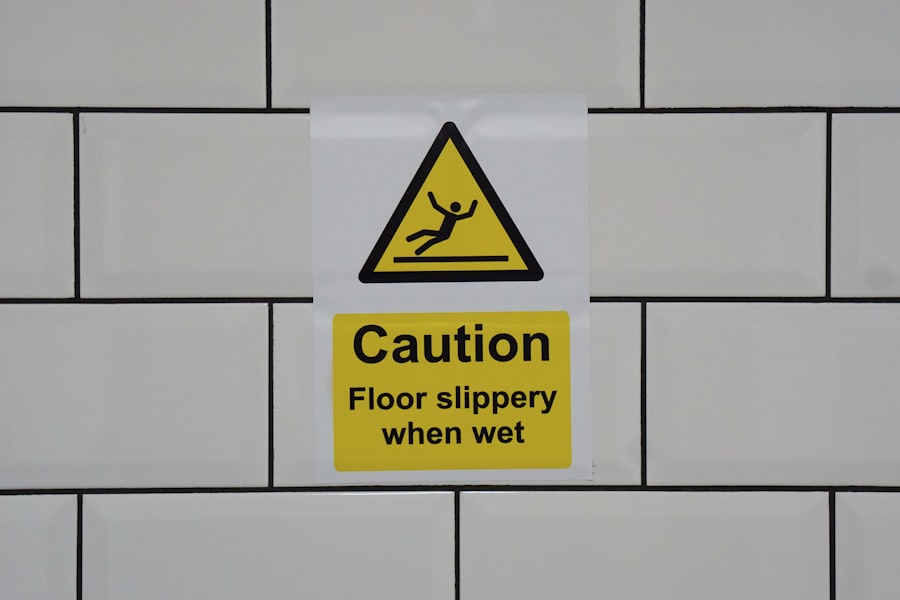
- By: admin
- Category: Commercial Floor Cleaning Machines
- 0 comment
In the realm of commercial and industrial cleaning, floor scrubbers are indispensable tools that enhance efficiency and maintain hygiene standards. However, the power and effectiveness of these machines come with a responsibility: ensuring the safety of operators and those around them. Understanding floor scrubber safety is not merely a regulatory requirement; it is a critical aspect of operational excellence that can prevent accidents, reduce downtime, and foster a culture of safety within the workplace.
This article delves into the essential safety practices associated with floor scrubber operation, providing valuable insights for contract cleaners, building managers, and facility managers across Australia. The significance of floor scrubber safety cannot be overstated. With the potential for slips, trips, and falls, as well as electrical hazards, the risks associated with improper use are considerable.
By adhering to established safety protocols, operators can mitigate these risks, ensuring a safer working environment. This article will explore the do’s and don’ts before operating a floor scrubber, essential safety precautions during use, maintenance practices, training requirements, common mistakes to avoid, and emergency procedures in case of accidents. Please feel free to get in touch with us through our Contact Us page.
Summary
- Proper training and certification are essential for floor scrubber operators to ensure safety and efficiency.
- Regular maintenance and cleaning of the floor scrubber is crucial to prevent accidents and ensure its proper functioning.
- Essential safety precautions while using a floor scrubber include wearing appropriate personal protective equipment and being aware of the surrounding environment.
- Before operating a floor scrubber, it is important to follow the do’s and don’ts to ensure the safety of the operator and others in the vicinity.
- In the event of a floor scrubber accident, it is important to be familiar with emergency procedures and first aid to provide immediate assistance.
Do’s and Don’ts Before Operating a Floor Scrubber
Before engaging a floor scrubber, it is crucial to establish a clear set of do’s and don’ts that guide operators in preparing for safe operation. Firstly, operators should always conduct a thorough inspection of the machine prior to use. This includes checking for any visible damage, ensuring that all components are functioning correctly, and verifying that the water and cleaning solution levels are adequate.
A pre-operation checklist can be an invaluable tool in this regard, helping to identify potential issues before they escalate into serious problems. Conversely, one of the most significant don’ts is neglecting to read the manufacturer’s manual. Each floor scrubber model may have specific operational guidelines and safety features that are unique to that machine.
Ignoring these instructions can lead to misuse and increase the likelihood of accidents. Additionally, operators should refrain from using the machine in areas where there are obstacles or hazards that could impede safe operation. Ensuring that the workspace is clear not only enhances efficiency but also significantly reduces the risk of accidents.
Essential Safety Precautions While Using a Floor Scrubber

When operating a floor scrubber, several essential safety precautions must be observed to protect both the operator and others in the vicinity. Firstly, wearing appropriate personal protective equipment (PPE) is non-negotiable. This includes non-slip footwear, gloves, and eye protection to guard against splashes from cleaning solutions.
The importance of PPE cannot be overstated; it serves as the first line of defence against potential injuries. Moreover, operators should maintain a safe distance from other personnel while using the machine. Floor scrubbers can be noisy and may obscure an operator’s awareness of their surroundings.
By ensuring that colleagues are at a safe distance, operators can focus on their task without compromising the safety of others. Additionally, it is advisable to communicate clearly with team members when operating in shared spaces. Simple gestures or signals can alert others to the presence of the machine and prevent accidents.
Proper Maintenance and Cleaning of the Floor Scrubber
Proper maintenance and cleaning of floor scrubbers are vital for ensuring their longevity and safe operation. Regular maintenance checks should include inspecting brushes, pads, and squeegees for wear and tear. Worn components can compromise cleaning efficiency and pose safety risks if they malfunction during operation.
Establishing a routine maintenance schedule not only prolongs the life of the equipment but also ensures that it operates at peak performance. Cleaning the floor scrubber after each use is equally important. Residual cleaning solutions can lead to corrosion or damage if left unchecked.
Operators should follow manufacturer guidelines for cleaning and storing the machine, ensuring that all parts are free from debris and contaminants. This practice not only enhances safety but also contributes to maintaining high hygiene standards in commercial environments.
Training and Certification for Floor Scrubber Operators
Training and certification for floor scrubber operators are essential components of a comprehensive safety programme. Proper training equips operators with the knowledge and skills necessary to operate the machine safely and effectively. This training should cover not only operational procedures but also safety protocols, maintenance practices, and emergency response strategies.
Certification programmes can vary in length and content but should ideally include both theoretical knowledge and practical assessments. For instance, operators might undergo simulations that mimic real-world scenarios they may encounter while using a floor scrubber. By investing in training and certification, organisations demonstrate their commitment to safety while empowering employees with the confidence to perform their duties effectively.
Common Mistakes to Avoid When Using a Floor Scrubber

Despite best efforts, common mistakes can still occur when using floor scrubbers that jeopardise safety and efficiency. One prevalent error is overfilling the solution tank or using incorrect cleaning solutions. Overfilling can lead to spillage during operation, creating slip hazards for both the operator and others nearby.
Similarly, using inappropriate cleaning solutions can damage floors or render them unsafe for foot traffic. Another mistake often made is failing to adjust the machine settings according to the specific type of flooring being cleaned. Different surfaces require different approaches; for example, hardwood floors may need gentler settings compared to concrete surfaces.
Operators should always consult guidelines or seek advice from supervisors when unsure about settings or cleaning methods.
Emergency Procedures and First Aid for Floor Scrubber Accidents
Even with stringent safety measures in place, accidents can still happen. Therefore, having clear emergency procedures is crucial for minimising harm in case of an incident involving a floor scrubber. All operators should be familiar with these procedures, which should include immediate steps to take in case of an accident or injury.
First aid training is also an invaluable asset for any team operating floor scrubbers. Basic first aid knowledge can empower employees to respond effectively in emergencies, whether it involves treating minor injuries or knowing when to seek professional medical assistance. Regular drills or refresher courses can help keep this knowledge fresh in employees’ minds.
Importance of Operator Safety in Using a Floor Scrubber
In conclusion, prioritising operator safety when using floor scrubbers is not just about compliance; it is about fostering a culture of care within commercial and industrial environments. By adhering to established safety protocols—ranging from pre-operation checks to proper training—organisations can significantly reduce risks associated with floor scrubber operation. The benefits extend beyond mere accident prevention; they encompass enhanced productivity, improved employee morale, and a commitment to maintaining high standards of cleanliness.
As we have explored throughout this article, understanding the do’s and don’ts before operating a floor scrubber, implementing essential safety precautions during use, ensuring proper maintenance practices, investing in training and certification, avoiding common mistakes, and being prepared for emergencies are all integral components of a robust safety strategy. By embracing these principles, facility managers and contract cleaners can create safer working environments that ultimately lead to better outcomes for everyone involved. **FAQ Section** 1.
**What personal protective equipment (PPE) should be worn when using a floor scrubber?**
Operators should wear non-slip footwear, gloves, and eye protection to safeguard against splashes from cleaning solutions. 2. **How often should floor scrubbers be maintained?**
Regular maintenance checks should be conducted before each use, with more comprehensive inspections scheduled according to manufacturer recommendations.
3. **What should I do if I encounter an accident while using a floor scrubber?**
Follow your organisation’s emergency procedures immediately, which may include administering first aid or calling for professional medical assistance. 4.
**Is training necessary for all floor scrubber operators?**
Yes, proper training is essential for all operators to ensure they understand how to operate the machine safely and effectively. 5. **What are some common mistakes made when using a floor scrubber?**
Common mistakes include overfilling solution tanks, using incorrect cleaning solutions, and failing to adjust machine settings according to flooring types.
FAQs
What are the essential do’s for using a floor scrubber?
Some essential do’s for using a floor scrubber include wearing appropriate personal protective equipment, following the manufacturer’s instructions for operation, conducting a pre-use inspection of the equipment, and ensuring the area is clear of obstacles before use.
What are the essential don’ts for using a floor scrubber?
Some essential don’ts for using a floor scrubber include operating the equipment without proper training, using the machine on uneven or sloped surfaces, overloading the machine with excessive weight, and using the machine in areas with flammable materials.
Why is operator safety important when using a floor scrubber?
Operator safety is important when using a floor scrubber to prevent accidents, injuries, and damage to the equipment or surrounding environment. Proper training and adherence to safety guidelines can help ensure a safe and efficient cleaning process.
What personal protective equipment should operators wear when using a floor scrubber?
Operators should wear appropriate personal protective equipment when using a floor scrubber, including safety goggles, non-slip footwear, gloves, and hearing protection if the machine generates loud noise.
How often should a floor scrubber be inspected for safety purposes?
A floor scrubber should be inspected for safety purposes before each use to ensure that all components are in proper working condition. Regular maintenance and servicing should also be conducted according to the manufacturer’s recommendations.
